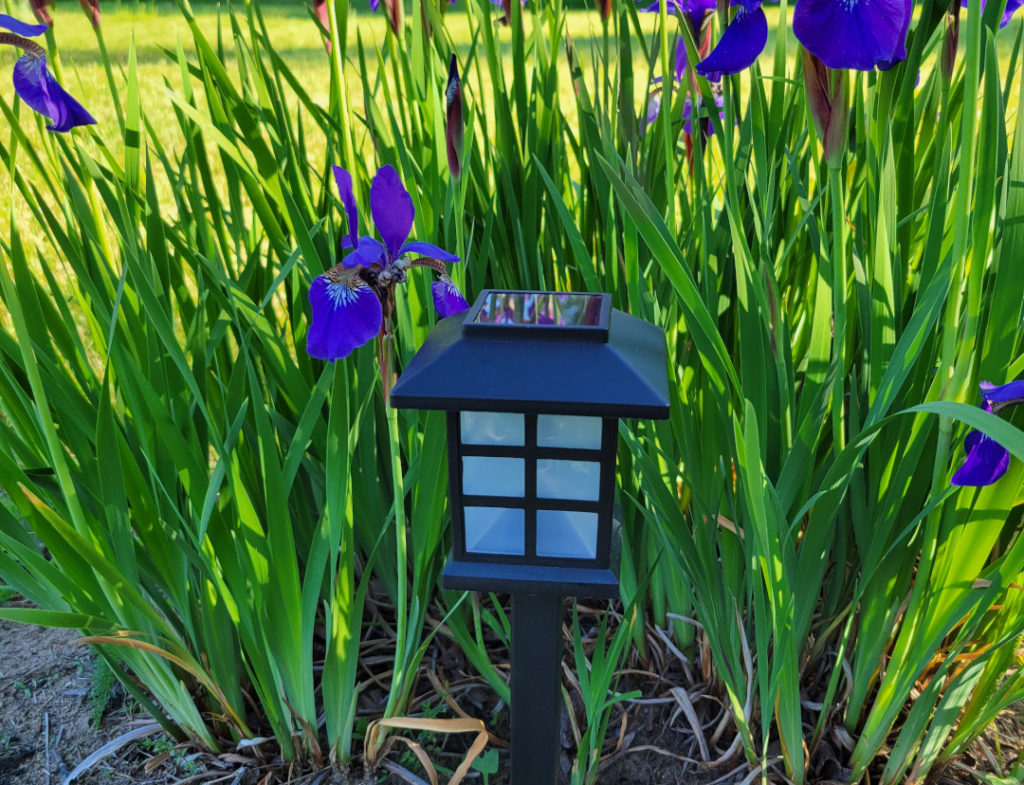The most probable reason your outdoor solar lights are dim is because you have a charge issue. In other words, either your batteries aren’t getting enough charge or they simply aren’t holding the charge they should.
Troubleshooting for the actual reason can help you decide whether or not it is time to get a new rechargeable battery for your outdoor light, or simply replace the light entirely.
Table of Contents
Clean The Light
Solar cells need direct sunlight in order to perform at their best. A solar cell that isn’t might not deliver enough power, leaving your battery at less than optimal capacity.
If your battery has an inadequate charge, the result will be a less than satisfactory performance from your light.
Arguably the easiest step towards determining the health of your light is by simply cleaning off the solar cell.
Dust, pollen and a host of other things can block/deflect the photons present in sunlight. It is the bombardment of these photons that initiates the process of electron flow,(I.e., electricity).
To picture this, imagine a washcloth held over the end of a running water hose. Yes, you will still see water come through, but not with the same ease or rate that a hose completely free of obstructions would.
Cleaning your solar cell, will eliminate a potential culprit for bad performance.
# Note #
If cleaning the solar cell does not give you the desired performance from your light, consider cleaning the housing the covers the LED. It may be that your light is performing as it should, but only it is too dirty to really shine
Move The Light
A common surprise for some is just how much plants can grow without you realizing it!
Whether it is decorative shrubbery or overhead tree branches, plants can easily grow in such a way that will negatively impact the amount of sunlight your light is receiving.
Moving your outdoor solar light to a new location – one with proven, unobstructed sunshine – can help you decide if the lack of sunshine is the cause of bad performance.
However, it is important to note that just because a light starts to perform better in the new location, this does not automatically imply that plants are the problem. It may be that your light is aging and the lack of sunshine caused by the greenery simply contributed.
Careful observation of your unique situation can help you decide.
Replace The Battery
Batteries operate and are rated by cycles – meaning the charge and discharge process of electrons. As the battery gets towards the end of its’ service life, the ability for it to hold power depreciates. This can result in either a light that is dim or a light that does not stay illuminated as long as it used to (or both).
A good way for you to troubleshoot a potential bad battery is by simply replacing it. If this results in the desired performance, long-term, then you know you have addressed the problem.
However, if this appears to work for a short while and then degrade, then it would be a fair assumption that either your solar cell is not delivering or there is some other internal issue at play.
# Note #
Always make sure to use the rechargeable battery that is recommended by the manufacturer. To do otherwise is to risk damage to your light.
Replace The Light
The science behind outdoor solar lights is actually quite impressive. Simply put one where ever you need light and they will do all that is necessary to shine; without any external or follow-up input.
And depending on how well the light was designed/manufactured, they can do this for years!
But as amazing and as they are, they do not last forever.
If you have thoroughly cleaned the light, moved it to a bright location, replaced the battery and still it does not perform, then it might be time to consider a replacement.
Aesthetics and capacity for outdoor lights are constantly evolving. Chances are, a good look at what’s available, could just get your ‘creative juices’ flowing.
